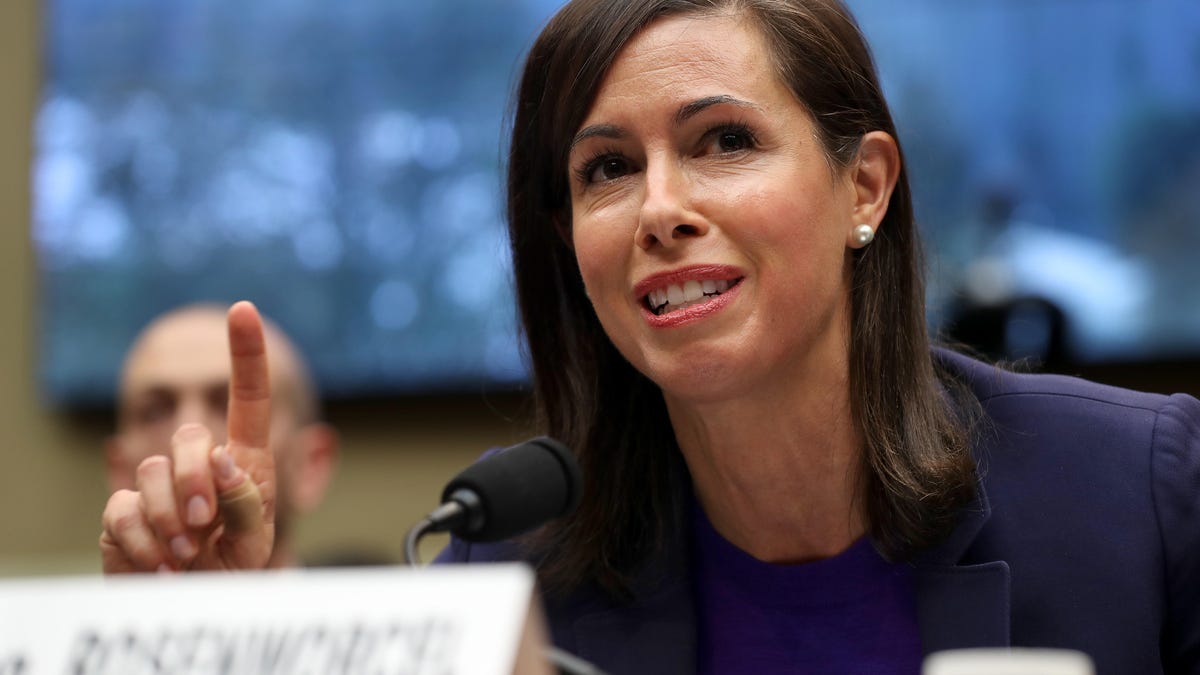FCC approves $50-a-month emergency broadband subsidies
The agency has approved rules to get the $3.2 billion COVID-19 relief fund up and running for people hit by the pandemic.

Acting FCC Chairwoman Jessica Rosenworcel said the $50-a-month subsidy will help ensure that poor families hit hard by the pandemic can get access to the internet to do things like attend school remotely and access health care.
The Federal Communications Commission on Thursday approved a plan to administer $3.2 billion in emergency relief to subsidize broadband for millions of poor Americans during the coronavirus pandemic.
The four-member commission unanimously voted to approve rules to the program that will offer up to $50 a month to low-income households and up to $75 a month to households on Native American land for broadband service. The FCC will also provide a one-time discount to poor households of up to $100 to purchase a computer or tablet.
The program will be available to eligible households within 60 days, said Jessica Rosenworcel, the acting chairwoman of the FCC. The agency still needs to sign up broadband providers that will administer and accept the discounts.
"This is a program that will help those at risk of digital disconnection," Rosenworcel said in a statement. "It will help those sitting in cars in parking lots just to catch a Wi-Fi signal to go online for work. It will help those lingering outside the library with a laptop just to get a wireless signal for remote learning."
Rosenworcel began circulating her proposal, called the Emergency Broadband Benefit, among FCC commissioners earlier this week. The plan puts into action money Congress allocated in December as part of the COVID-19 relief bill. Congress stipulated that the money would be available to households that are at the poverty line or 135 percent above it, those who qualify for free and reduced school lunches, or people who have experienced substantial loss of income since Feb. 29, 2020.
The FCC estimates that at least 14.5 million homes don't have access to broadband. The pandemic has shined a light on the inequities between people with and without access to high-speed internet. For millions of Americans, the digital divide exists because they live in a rural part of the country where broadband infrastructure simply isn't available. For other families in rural and suburban markets, broadband service may be available but unaffordable. During the pandemic, students without internet service haven't been able to attend school. And adults who can't go into offices have been unable to work remotely.
Policy makers have tried for years to resolve the digital divide. Despite billions of dollars being spent each year to subsidize the cost of building new infrastructure and to offset the cost of service for poor Americans, the problem persists. It hasn't helped that the FCC for years has been addressing these problems using maps that don't accurately reflect where broadband service exists and where it doesn't.
Congress and the FCC agree that the broadband mapping issue needs to be fixed. At the FCC's February meeting, Rosenworcel launched a task force to fulfill Congress' mandate to improve the FCC's broadband maps.

